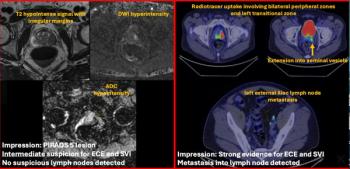
DI SCAN looks inside the declining CT market
Editor’s Note: This is the second of a two-part series on the CT marketplace in 2007. The first, which appeared in DI SCAN last week, summarized the market and the factors underlying its performance.
Editor's Note: This is the second of a two-part series on the CT marketplace in 2007. The first, which appeared in DI SCAN last week, summarized the market and the factors underlying its performance.
The sudden and precipitous drop in demand for CT scanners during 2007 has translated into lower prices across the board, slamming corporate bottom lines but producing some unexpected positive results.
In the first half of 2007, street prices for CTs fell to $900,000, down from $940,000 in 2006, a drop of about 4%, according to aggregate industry estimates. The premium sector was hardest hit, as 64-slice CTs that once commanded nearly $2 million fell to $1.3 million and under, according to Andre Hartung, vice president of CT marketing and sales for Siemens Medical Solutions. New 16-slice systems, now considered by many to be the minimal entry level for CT, carry price tags at or below $800,000, he said, depending on the circumstances of the sale.
These market dynamics have led to an uptick in demand for 16-slice scanners. Eroding prices have made these scanners an irresistible bargain for many prospective customers, according to Doug Ryan, senior director of the CT business unit at Toshiba America Medical Systems.
"Demand for the 16-slice will be strong for another six to 12 months," Ryan said. "But given that these new technologies are coming out from all vendors, from what I understand, the price pressure on the CT market will continue to push more advanced systems down until 32- and 40-slice CTs will be more affordable solutions."
Toshiba will be applying much of this pressure when it launches its 256-slice CT next year. Competitors were given plenty of notice: Toshiba has been talking up the "256" for the past two years at RSNA meetings. This has led to speculation that other vendors will mount a response and that 64-slice scanners will not be king of the hill for much longer.
This could have a positive effect on the market. The next generation of high-powered scanners, populated by 128- or 256-slice systems or multibeam or multienergy ones, could rekindle market demand. Lending credence to that possibility, Hartung said, is Siemens' dual-beam, dual-energy scanner, the Somatom Definition, which has buoyed CT revenues for the company.
Given the pending technological advances and over one-half year's experience with the Deficit Reduction Act, some industry execs are upbeat that the worst is over.
"We are hoping that next year is the start of a comeback," said Dom Smith, general manager of CT advanced technologies at GE Healthcare.
John Steidley, vice president of global CT marketing at Philips Medical Systems, is similarly optimistic. The DRA has squeezed out marginal players in the outpatient industry, he said. Procedures they would have performed have gone to other providers.
"This has helped (the surviving centers) to rebound their business," Steidley said. "They are doing more scans, even though they are being reimbursed less for each one."
Siemens, too, has suffered a drop in demand for CTs at lower performance levels. Its executive team expects a turnaround, although not one of major proportions.
"We believe the overall market will slightly recover next year," Hartung said. "But it will not get back to the 2006 level immediately. That would be too optimistic."
Newsletter
Stay at the forefront of radiology with the Diagnostic Imaging newsletter, delivering the latest news, clinical insights, and imaging advancements for today’s radiologists.




























